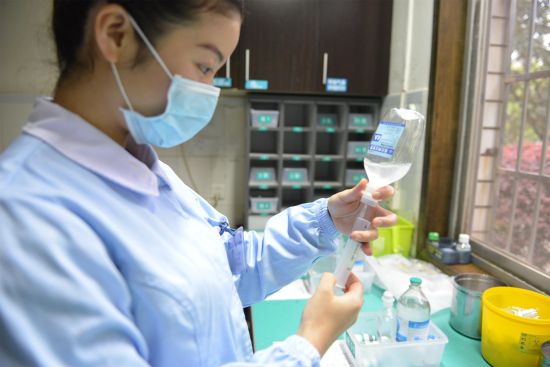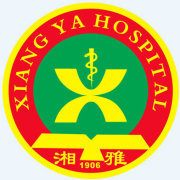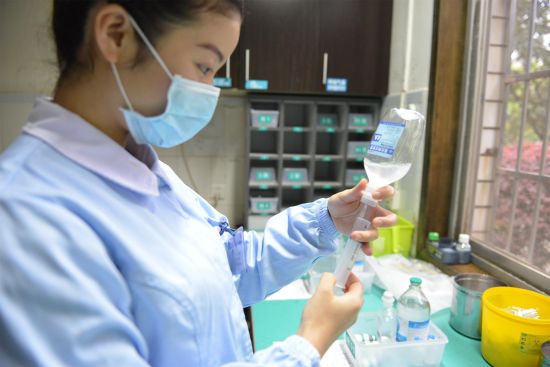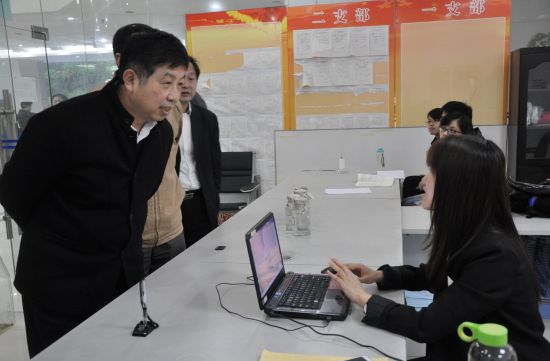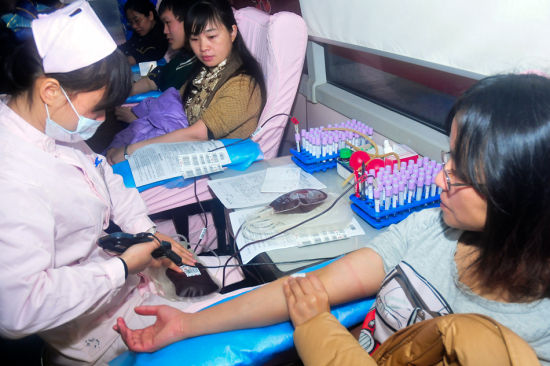作者:黄卫国(南京大学鼓楼医院泌尿外科)
【摘要】目的:探讨棒状水囊经尿道扩开术治疗高危高龄前列腺增生的安全性和临床疗效。方法自2006年3月~2011年10月,应用四腔高压棒状水囊导管经尿道扩开治疗前列腺增生症(BPH)113例,年龄68~94岁,平均74.6岁。均有BPH引起的下尿路梗阻症状,病史5~15年。合并肺功能不全27例,高血压、冠心病、心功能不全的53例,糖尿病21例,肾功能有轻中度损害的9例,脑血管后遗症3例,陈旧性脑梗的4例。B超检查前列腺体积34~230ml,平均(46.8±9.2)ml;104例最大尿流率(Qmax)3.4~10.8ml/s,平均(7.4±1.6)ml/s;膀胱残余尿量(PVR)是40~180ml,平均(78±10.2)ml,9例发生尿潴留;国际前列腺症状坪分(I-PSS)8~34分,平均(21.6±4.4)分;生活质量评分(QOL)4~5分,平均(4.8±0.2)分。前列腺特异抗原(PSA)检查0.8~18.6ng/ml,结合肛检和可疑B型超声改变者8例行前列腺穿刺活检除外前列腺癌,其中5例为TURP术后,1例为开放性术后复发者。根据患者前列腺体积的大小和膀胱残余尿量的多少,选择不同型号的棒状水囊导管。在低位腰、硬联合麻醉下,将导管经尿道定位在后尿道,分别向内外囊内注水至0.3Mpa,然后关闭内外囊注水管,此时内囊位于膜部尿道,外囊位于前列腺部尿道内。术后根据患者的具体情况放水减压和镇痛。结果:从置管定位到注水扩开平均手术时间为10min。术后导管留置3~5天。患者扩开术后3~24个月复查,Qmax平均增至(15.8±2.1)ml/s,PVR降至(22±8.1)ml,IPSS降至(6.8±1.2),QOL降至(1.4±0.3),均较术前明显改善。本组有2例患者于扩裂开后3年又出现排尿费力,请求再次扩开。结论:对高危高龄患者,术前控制内科疾病,采取棒状水囊经尿道扩开,是前列腺诸多手术中唯一保留原脏器的手术,创伤极微,手术时间短,安全系数高,值得推荐为BPH患者解决排尿困难的一种有效方法。也是不愿意切除前列腺组织或因年老体弱不能耐受切除手术患者的理想选择。该法经过多年的动物实验和临床实践,己较成熟。正确选择水囊管的型号,术中准确的水囊定位以及有效的术后镇痛,是扩开术治疗BPH成功的关键。
【关键词 】尿道扩开 水囊导管 前列腺增生
通信作者:黄卫国,Email:hwg195l@yahoo.com.cn
Treatment of senior and high riskBenign Prostatic Hyperplasia(BPH)by Urethra dilatation with Columnar water ballooncatheter
Weiguo,Huang
Department of Urology,Qingyang Hospital Jiangyin city,214401 China
[Abstract] Object To explore the safety and clinical efficacy ofthe urethra dilatation with Columnar Water Balloon catheter in the treatment ofsenior and high risk benign prostatic hyperplasia(BPH ). Methods from March 2006 to March 2011, 113 patients with BPHwere treated by urethra dilatation with Columnar Water Balloon catheter. Theage of them was from 68 to 94 years old, and the average was 74.6 years. All ofthe patients had slighter urinary tract obstruction symptoms caused by BPH withhistory of 5 to 15 years. Among these 113cases, 27 with respiration problems;53 with hypertension, coronary heart disease and cardiac insufficiency; 21 withdiabetes mellitus; 9 with slight or moderate kidney damage; 3 withcerebrovascular accident sequelae; 4 with old cerebralinfarction. Prostate volume of 113 patients ranged from 34ml to 230ml detectedby B-ultrasound. Among 104 cases,the maximum flow rate(Qmax) was 3.4~10.8ml/s,an average of (7.4 ± 1.6) ml / s; the post-void residual urinevolume (PVR)was between 40ml and 180ml, an average of (78 ± 10.2)ml; 9 with urinary retention. In all cases, the InternationalProstate Symptom Score (IPSS) was 8-34 points, an average of 21.6 ±4.4 points; the quality of life score symptom score was 4~5 points, with the average of 4.8 ±0.2 points; the prostate specificantigen was 0.8~18.6ng/ml.Combining with rectal examination and ultrasound, 8 cases suspected withprostate cancer were underwent prostate biopsy to exclude prostate cancer, 5cases were after TURP, 1 cases of recurrence after open surgery。According to the prostate volume and the post-voidresidual urine volume of the patients, different types of columnar waterballoon catheter were chosen. In the circumstances of epidural anesthesia,located the catheter in the posterior urethra through the urethra, watered theinternal and external capsule to 0.3Mpa respectively, and then clamped theinjection pipes of the internal and external capsule. At this point, theinternal capsule was located in the membranous urethra, while the externalcapsule was in the prostatic urethra. According to the specific circumstancesof the patients,drainagedthe water regularly to reduce pressure after operation。Results It took 10 minutes from catheter location tourethra dilatation by watering on average. Indwelled urethral catheter for 3~5 days postoperation. The patients were reviewed after3~24 months: Mean Qmax increased to (15.8±2.1) ml/s, PVR decreased to(22 ± 8.1) ml, IPSS fell to(6.8 ± 1.2), QOLdropped to (1.4 ± 0.3), Significantly improved comparedwith preoperation。Inthis group, 2 patients showed recurrence of dysuria after 3 years, requiringre-dilatation。ConclusionsAccording to high-risk elderly patients, controlling medical illnesspreoperative and taking columnar water balloon catheter by transurethral todilatate prostate tissue is the only remaining original one in so manysurgeries. With minimal trauma, shortest surgery time and highest safetyfactor, it deserves to be recommended for the patients who are unwilling toremove prostate tissue or can not tolerate surgery because of their infirmity。Through years of animal experiments and clinicalpractice, it has been more mature. Urinary problems due to BPH can be solvedwithout resection of prostate tissue.This method is in support of the law.Prostate size and dysuria is not directly proportional。
The key point is whether theurethra is unobstructed。
[Key words]Urethra dilatation,Columnar water balloon catheter, BPH。
前列腺增生症是50岁以上男性的常见疾病,传统的开放性手术和经尿道前列腺切除术,手术时间长,创伤大,出血较多,对患者的体质要求亦高。
自2006年3月~2011年10月,应用四腔高压棒状水囊导管经尿道扩开治疗高危高龄前列腺增生症113例,报告如下。
对象与方法
一、一般资料:
本组113例,年龄68~94岁,平均74.6岁。均有不同程度的BPH引起的下尿路梗阻症状,如尿前等待,尿线细而无力,夜尿次数增多等。病史5~15年,合并肺功能不全27例,高血压、冠心病、心功能不全的53例,糖尿病21例,肾功能有轻中度损害的9例,脑血管后遗症3例,陈旧性脑梗的4例。B超检查前列腺体积34~230m,平均(46.8±9.2)m;104例最大尿流率(Qmax)3.4~10.8ml/s,平均(7.4±1.6)ml/s;膀胱残余尿量(PVR)是40~180ml,平均(78±10.2)ml,9例发生尿潴留;国际前列腺症状评分(I-PSS)8~34分,平均(21.6±4.4)分;生活质量评分(QOL)4~5分,平均(4.8±0.2)分。前列腺特异抗原(PSA)检查0.8~18.6ng/ml,结合肛检和可疑超声改变者8例行前列腺穿刺活检除外前列腺癌。其中5例为TURP术后,1例为开放性术后复发者。
二、方法:
对患者进行术前常规体格检查,对每例高危高龄患者的内科合并症予以调整和对症处理。根据患者前列腺体积的大小和膀胱残余尿量的多少,选择不同型号的棒状水囊导管。在低位硬膜外和腰麻下,将导管经尿道定位在后尿道,分别向内外囊内注水至0.3Mpa,然后夹闭内外囊注水管,此时内囊位于膜部尿道,外囊位于前列腺部尿道内。术后六小时开始定时定量放水减压。
结 果
从置管定位到注水扩开前列腺,平均手术时间为10min。术后导管留置3~5天。患者扩开术后3~24个月复查,均诉排尿顺畅,Qmax平均增至(15.8±2.1)ml/s,PVR降至(22±8.1)ml,IPSS降至(6.8±1.2)分,QOL降至(1.4±0.3)分,均较术前明显改善。本组有2例患者于扩开术后3年又出现排尿费力,要求再次行扩开术。
讨 论
良性前列腺增生(BPH)是引起中老年男性排尿障碍原因中最为常见的一种良性疾病。其发病率随着年龄的增长而增加。世界已进入老龄化社会,患有前列腺增生的人近5亿。传统的开放性手术和经尿道切除前列腺的手术,创面大,出血较多,术后恢复慢,且并发症多,对病人体质的要求亦较高。1948年Burhenne等开始进行前列腺部尿道水囊扩张的动物实验和临床研究。1987年美国Castaneda首先报道,应用球囊扩张治疗BPH5例,由于操作简单,创伤小,在国内外曾一度开展,但又由于该扩张法效果不确定,又被逐渐放弃。我国郭应禄院士领导的专家团队没有放弃,而是不断创新、研究,多次改进扩裂导管,由球形改成筒状长柱形,由扩张直径F60,扩大到F84-F114,扩张的时间由10分钟延长到12小时,经过10多年的临床实践,冲破了膜部尿道不能扩张的这一禁区,研制出多种型号的四腔水囊管,供不同大小、形态的增生前列腺选择。使后尿道扩开术治疗前列腺增生症趋向成熟。
该扩开法的一个创新是冲破了膜部尿道这一禁区。棒状水囊扩开术成功的对雄犬膜部尿道梗阻段进行了扩张,试验犬肌电图研究证实,尿道括约肌的肌电活动基本正常,说明对膜部尿道的适当扩张不仅不会造成尿道括约肌的损伤或尿失禁的发生,而且对维持正常的排尿功能有着至关重要的作用。
该法还佐证了前列腺组织大小与排尿困难是不成正比的,关键在尿道是否通畅。只要梗阻段被松解和扩开,前列腺增生症不需要手术切除腺体组织,就可以解决排尿困难问题。
术前CT片
图片
术前CT片示,前列腺组织像座大山,己压扁尿道,看不见尿道腔。
术中CT片(1)
图片
术中CT片示前列腺组织被水囊,从12点处扩开,并向两侧裂开。
术后CT片
图片
术后CT片示前列腺组织大部分合拢,但山顶出现火山口样改变,新的尿道在前列腺12点处建立,较宽敞。
图片
综观CT片可以看出,柱状水囊管注水增粗扩开后尿道时,将前列腺组织12点处的前纤维和平滑肌撕裂松开,使的前列腺部尿道或压并裂开。重建的后尿道宽敞松弛,因此排尿顷畅。
对高危高龄患者,术前控制内科疾病,采取柱状水囊经尿道扩开,是前列腺诸多手术中唯一保留原脏器的手术,创伤极微,手术时间短,安全系数高,值得推荐为BPH患者解决排尿困难的一种有效方法。也是不愿意切除前列腺组织或因年老体弱不能耐受切除手术患者的理想选择。
该法经过多年的动物实验和临床实践,已较成熟。正确选择水囊管的型号,术中准确的水囊定位以及术后酌情或压,是扩开术治疗BPH成功的关键。
